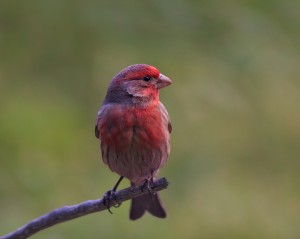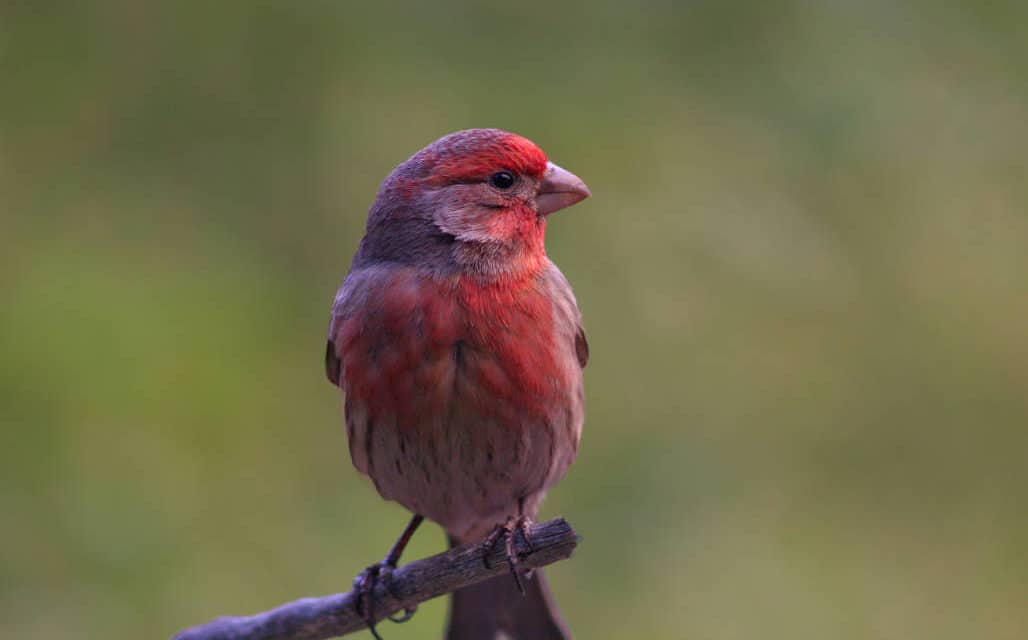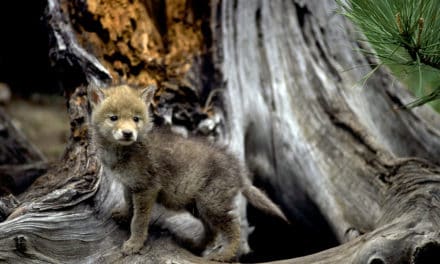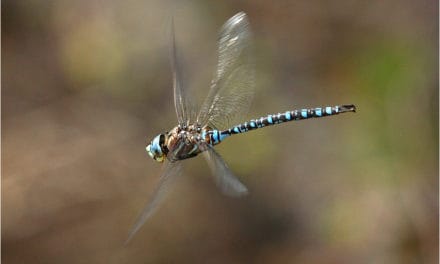By Melissa Wynn

Recently, while visiting a friend, I noticed the prettiest pink bird fluttering around his bird feeder. After a bit of research, I learned that it was a Purple Finch. Hmmm, why not call it a Pink Finch? Males of this small sparrow-like species have a raspberry colored head and sport a bit of a mohawk. The pinkish tinge of color lightens as it flows down the back and chest, almost like they have been dipped head first into a glass of cherry kool-aid. Female Purple Finches are, like most female birds, more plain and lack the brilliant red coloring. They are coarsely streaked below, with strong facial markings including a whitish eye stripe and a dark line down the side of the throat.
Purple Finch females are not easily impressed and their male counterparts work hard to win a mate. The boys are required to softly sing, often with a twig in their beak, while strutting their stuff in a sort of fluttering, hopping dance. As if being pretty in pink were not enough! If all goes well, the pair will build a nest among the branches of a tree or shrub and fill it with 2-7 tiny greenish blue speckled eggs that will hatch in about twelve days. Although Purple Finches make short work of entering the world, they take their time in departing. The oldest recorded Purple Finch lived to be 11 years 9 months old.
Black sunflower seeds in my friend’s feeder are a favorite for the Purple Finch, but they feed on wide variety of seeds, berries, cherries, apricots and even nectar that they harvest by biting the bases off of selected flowers. These fat little fluffs of feathers also dine on several insects including aphids, caterpillars, grasshoppers, and beetles.
Whether you see them around your bird feeder or catch a glimpse in the forest, the singing, dancing Purple Finch is a joy to watch.
facts courtesy of allaboutbirds.org












